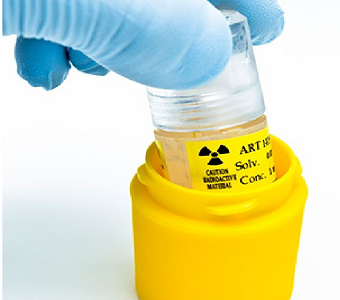Immune checkpoint regulators are again making headlines, this time at the American Society of Hematology, where they are demonstrating exciting early efficacy in hematological malignancies. Adam Feuerstein, of TheStreet, has published a thorough summary of the data presented so far this weekend in relapsed/refractory Hodgkin Lymphoma (HL) patients treated with the anti-PD-1 antibodies Opdivo (nivolumab) and Keytruda (pembrolizumab). Although it’s still not apparent which drug is coming out ahead from a commercial standpoint, it is quite clear that patients are winning. We highlighted in our ASH primer prior to abstract publication in November that these anti-PD-1s were assets to watch going into this meeting, as they are poised to demonstrate groundbreaking data in hematological malignancies. Of note, Bristol-Myers Squibb (BMY) is scheduled to present additional data from a phase I study of nivolumab in which a wide range of relapse/refractory malignancies at 10:30am on Monday.
In addition, checkpoint regulators were highlighted last week in a touching Wall Street Journal article on the effects of immunotherapies in creating “Super Survivors”. With these stories as backdrop, it’s not hard to see how paradigm shifting immunotherapies (including checkpoint regulators) are providing significant benefit for cancer patients with unmet needs. Here, we offer some background on this therapeutic landscape, as well as one of our top ideas for involvement.
Immunotherapy in general, refers to treatments that facilitate and/or regulate immune system activity for the treatment of diseases/infections. Immunotherapy is a relatively new therapeutic modality, with the first official cancer immunotherapy, interferon-a, approved in 1986. Recombinant cytokines like interferon are essentially manufactured copies of natural human cytokines, and represent the 1st generation of cancer immunotherapy.
Since the approval of the first monoclonal antibody (mAB) Rituxin (rituximab), significant advancements in the science underlying this treatment modality have ushered in generation 2.5, mAB checkpoint regulators. Checkpoint regulators represent a new immunotherapy treatment modality because of their specificity in modulating the body’s immune activity, accomplished through interaction with checkpoint receptors on specific immune cells.
Immune checkpoints refer to a group of signaling pathways that can be divided into two broad categories: inhibitory immune checkpoints (negatively regulate an immune response) and co-stimulatory/activating immune checkpoints (positively regulate an immune response). Examples of T cell checkpoint receptors are shown below [22]. Traditionally, monoclonal antibodies are used as either an antagonist (inhibitory immune checkpoints) or agonist (co-stimulatory/activating immune checkpoints) to regulate immune checkpoint receptors.

An analogy commonly applied to this is:
- Blocking an inhibitory immune checkpoint receptor on T cells (ex: PD-1, CTLA4) with an antagonist mAb:
- Antagonizing an inhibitory immune checkpoint receptor is seen as ‘releasing the brake’ on immune cells (ex: exhausted T cells) expressing this receptor in order to facilitate a more robust immune response.
- Blocking a co-stimulatory/activating immune checkpoint receptor (ex: OX40, CD137/4-1BB) with an agonist mAb:
- Agonizing a co-stimulatory/activating immune checkpoint receptor is seen as ‘stepping on the gas’ on immune cells (ex: T cells) expressing this receptor in order to facilitate a more robust immune response.
Tumor cells are normally kept at bay by a completely functional immune system, with cells such as T and NK cells regulated by (among other things) a balance of checkpoint receptors. This functional immune system allows optimal T/NK cell-mediated immunosurveillance, these cells’ ability to identify and act against foreign/mutated cells. Some tumor cells promote their growth by inhibiting this immunosurveillance (tumor immune escape) and promoting T/NK-cell exhaustion (dysfunctional T/NK cell phenotype). This essentially allows tumors to hide from the immune system. For example, some melanoma cells overexpress PD-L1/2, the ligands of PD-1, in order to escape T cell detection; normal T/NK cell function can be restored by blocking PD-1 (shown graphically below) with mAbs such as BMY’s nivolumab [20]. By regulating existing immune checkpoint receptors, emerging therapeutics are beginning to provide treatment options for cancers with significant unmet needs. Checkpoint receptor regulators accomplish this through a mechanism of action that potentially restores proper tumor immunosurveillance and T/NK cell function.
T cell checkpoint regulators: anti-PD-1 and anti-CTLA-4 mAbs

The clinical development and regulatory approval of anti-CTLA-4 and anti-PD1 mAbs in melanoma serve as an ideal case study to demonstrate the potential of immune checkpoint regulators in oncology.
Interest in checkpoint inhibitors increased significantly in 2010 following phase III data for BMY’s Yervoy (Ipilimumab) in late-stage metastatic melanoma; the drug was subsequently approved by the FDA in this setting a year later. Yervoy was the first therapeutic to extend the survival time for patients with metastatic (stage III/IV) melanoma (phase III median overall survival: ~10 months vs. ~6 months with gp100 peptide vaccine control) [1]. The phase III trial also offered a first glimpse at checkpoint inhibitors’ ability to facilitate a ‘long tailed’ OS, apparent in the Kaplan Meier curve below.

With this landscape-altering Yervoy data and the antibody’s subsequent approval, focus shifted to the next potential immune checkpoint target. Enter PD-1 inhibitors.
The interest surrounding this drug class may be best illustrated by a comparison of one-year survival outcomes for (stage III/IV) metastatic melanoma patients enrolled in the afore-mentioned phase III Yervoy trial to patients enrolled in the phase I trial of BMY’s Nivolumab (anti-PD1). In metastatic (stage III/IV) melanoma, Yervoy generated a one year OS of ~45%, versus a one year OS of ~60% for patients receiving Nivolumab [1,2]. Additionally, nivolumab has thus far produced a cleaner safety profile than Yervoy in melanoma – important for the future use of checkpoint regulators in combination.
Truly, the excitement around immune checkpoint regulators comes from the potential for combination therapy: Nivolumab and Yervoy in a phase Ib metastatic melanoma trial produced a one-year OS of 80-90% [3]. This is extremely impressive next to one-year monotherapy outcomes, and to the 25% one-year OS rate in patients receiving gp100 peptide vaccine.
Melanoma patients who previously had no acceptable treatment options are now demonstrating robust and durable responses when receiving immune checkpoint regulators. And, the improvement appears to translate to some lung cancers.
Exemplified again by survival curves, this time comparing OS from the Checkmate-003 study of nivolumab and the phase III DELTA study (comparing docetaxel to erlotinib [6,7] in non-small cell lung cancer), Nivolumab is clearly emerging as a potential treatment option in this difficult setting.
Details from the trials are below, though note that cross-trial comparisons are an imperfect gauge.
- Checkmate-003:
- Stage III/IV (metastatic) NSCLC
- At least 1, and up to 5, prior systematic therapies
- DELTA
- Stage III/IV (metastatic) NSCLC
- Previous treatment with 1 or 2 chemotherapy regimens (at least 1 platinum-based)

Very similar to melanoma, heavily-pretreated and late-stage NSCLC patients receiving Nivolumab have gone on to achieve robust and durable responses (long OS tail). Although the KM curve shift of Nivolumab vs. the ‘standard-of-care’ in this NSCLC patient population is not as robust when compared to the same metric in melanoma; anti-PD-1s are already positioned to provide a quality treatment option. Nivolumab is currently in two phase III trials vs. docetaxel to determine whether nivolumab will see use in the 2nd-line setting, before docetaxel [49,50]. If Nivolumab fails to demonstrate an increased OS in 2nd line NSCLC versus docetaxel, it remains positioned to potentially be the first agent approved in 3rd line NSCLC, patients refractory to both platinum-based chemotherapy and docetaxel.
This paradigm-shifting data in melanoma and NSCLC, and the recent regulatory approval of Keytruda (anti-PD-1), has prompted pharma companies to make significant investments in the PD-1 space. Pfizer (PFE) recently signed a $3 billion partnership with Merck KGaA, including the largest upfront payment in pharma history ($850 million) for exclusive global rights to Merck KGaA’s anti-PD-L1. Other companies developing PD-1 inhibitors include Roche (RHHBY) (in-house anti-PD1/PDL1 programs), Medivation (MDVN) (CT-011 from CureTech) and GlaxoSmithKline (GSK) (AMP-224 from Amplimmune). Although these anti-PD-1 deals can be seen as “me too” deals following the success of Keytruda and Nivolumab, they demonstrate pharma’s appetite for assets targeting validated immune pathways – and how much these companies are willing to pay.
Ideally, emerging checkpoint targets and agents that modulate them, will/should have a clean safety profile in order to accommodate combination use.
The (slightly outdated) graphic below demonstrates that the checkpoint space is beginning to crowd [21]:






